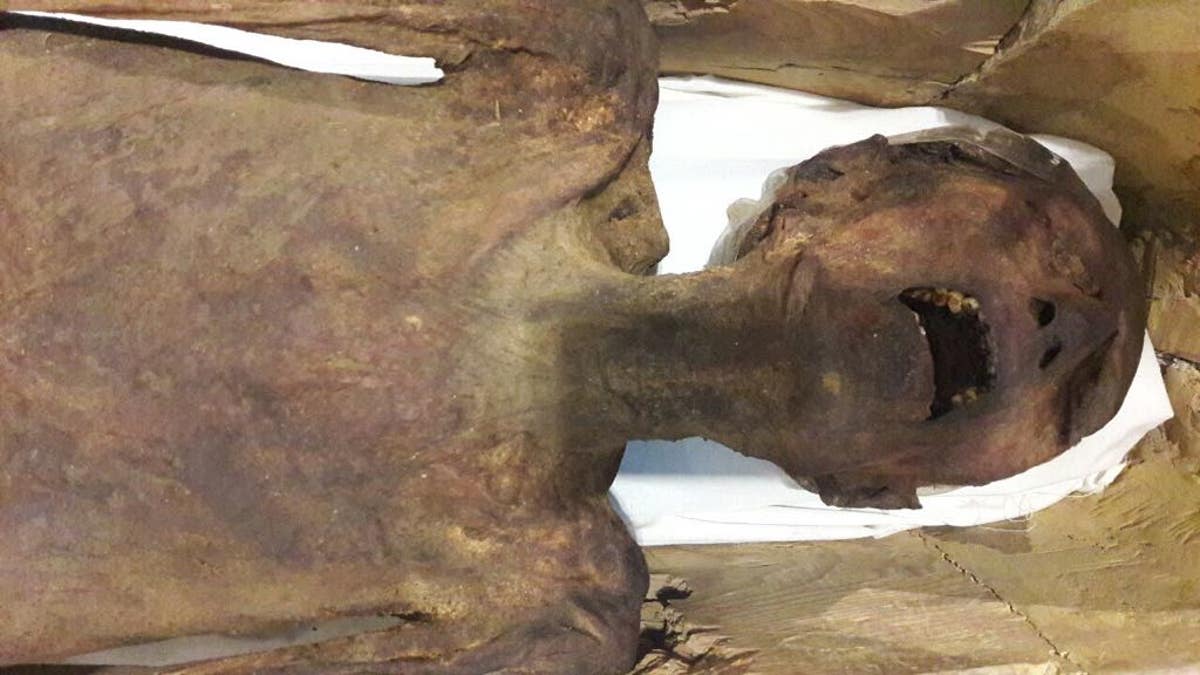
(Credit: Ministry of Antiquities, Facebook)
The "Screaming Mummy" mystery from ancient Egypt has baffled experts for years but the secret behind the horrifying remains has finally been resolved.
When archaeologists first uncovered the mummified body they were surprised to find the face of the long-dead Egyptian distorted in anguish, appearing to be silently screaming.
Over the years various theories had been aired in an attempt to reveal who the man was and why he seemed to have died in agony.
One popular theory said he was Prince Pentewere, son of Pharaoh Ramses III and one of his wives, Tiye.
The prince unsuccessfully plotted to kill his father and take his throne and, according to ancient records, was made to take his own life after the plan failed and he was put on trial.
But the latest theory casts doubt on that explanation.
Dr. Bob Brier, an archaeologist at Long Island University in New York, who has examined the body, said: "Two forces were acting on this mummy: one to get rid of him and the other to try and preserve him.”
Dr. Zahi Hawass from the Egyptian Supreme Council of Antiquities believes it is likely that the mummy was a prince who brought shame on his family.
It was buried alongside other royals but was covered in a sheepskin.
Dr. Hawass, a former minister of antiquities, said: "In the mind of the ancient Egyptian, to cover with a sheepskin means he was not clean, he did something bad in his life.
"We'd never seen a mummy like this, suffering. It's not normal, and it tells us something happened, but we did not know exactly what."
Dr. Brier added: "For some reason, there was an attempt to make sure that he didn't have an afterlife, and in another attempt, somebody cared about him and tried to override that."
The "Screaming Mummy" is on display this week at the Egyptian Museum in Cairo for the first time.
Elham Salah, from the Ministry of Antiquities, said in a statement that this was the first time that the mummy had been put on display since it had been moved to the museum.
Until this week the remains had been kept in its coffin in a storage area of the museum.
This story originally appeared in The Sun.




















